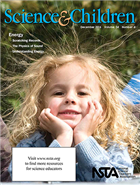Preparing to plant in Spring
By Peggy Ashbrook
Posted on 2016-12-02
 The seasonal decline in the amount of direct sunlight in North America is bringing an end to my garden growing season. The leaves of deciduous trees in my region are mostly off the trees now. Children have been helping rake them into big piles to jump into. We sort out the sticks so no one gets poked when they jump. A few children with allergies to mold choose other tasks to tend the play area: reseeding the grassy places and washing the fence with water. As we pile up the leaves I’m thinking of how we will use them for mulch in the garden bed to prevent weed growth over the winter. What looks like a large amount now will be much reduced by weathering and the work of detritivores such as isopods, just one of those small animals that eat decaying plant matter.
The seasonal decline in the amount of direct sunlight in North America is bringing an end to my garden growing season. The leaves of deciduous trees in my region are mostly off the trees now. Children have been helping rake them into big piles to jump into. We sort out the sticks so no one gets poked when they jump. A few children with allergies to mold choose other tasks to tend the play area: reseeding the grassy places and washing the fence with water. As we pile up the leaves I’m thinking of how we will use them for mulch in the garden bed to prevent weed growth over the winter. What looks like a large amount now will be much reduced by weathering and the work of detritivores such as isopods, just one of those small animals that eat decaying plant matter.
 Isopods (aka roly-polies, pillbugs, slaters, wood lice, potato bugs and other names) are my favorite animal to keep in containers for children to observe and handle. They are easy to find, require just a little attention, and are safe and durable for handling. Children learn about diversity in living organisms, how to best use magnifiers while counting the number of legs on these small crustaceans, and how to provide the needs of an animal that is so different from themselves. Learn more at:
Isopods (aka roly-polies, pillbugs, slaters, wood lice, potato bugs and other names) are my favorite animal to keep in containers for children to observe and handle. They are easy to find, require just a little attention, and are safe and durable for handling. Children learn about diversity in living organisms, how to best use magnifiers while counting the number of legs on these small crustaceans, and how to provide the needs of an animal that is so different from themselves. Learn more at:
Animal Diversity Web from the University of Michigan
YouTube videos
Rusty & Ollie’s Fun, Facts, and Follies. Episode 13: Isopods! Nature’s Janitors. This conversation between the chill Mr. Max and the excitable puppet Rusty is informative and fun.
Rebecca Hulit’s informative Isopods – Backyard Critters shows close ups of the isopods so we can see the leg segments and more.
 I am planning to plant potatoes in the spring and wrote about this gardening activity in the December 2016 Early Years column in Science and Children. Using the area extension service and other websites I learned that the temperature of the soil is important in determining best potato planting time.
I am planning to plant potatoes in the spring and wrote about this gardening activity in the December 2016 Early Years column in Science and Children. Using the area extension service and other websites I learned that the temperature of the soil is important in determining best potato planting time.
Extension services provide valuable advice and research for home gardeners and commercial agriculture. Extension Horticulturist Ron Smith of the North Dakota State University answers questions in the Hortiscope. The University of Maryland Extension provides Vegetable Profiles online, and the Iowa State Extension and Outreach has articles on Yard and Garden planting.
Although we eat the tubers of the potato plant, their leaves, stems, flowers and fruits contain poisonous compounds and can cause stomach pain, diarrhea and additional serious symptoms, so they should not be eaten. While we can use children’s ages as a rough guide to when they will have good judgment about what is safe to put in their mouths, there are always children who explore unsafely. There is no substitute for knowing our students and supervising appropriately. Planting edible leaved plants such as herbs in a different area than potato plants is one way to help children learn which plant leaves are safe to eat.
 The topic of beginning a small school garden is on-going on the Early Childhood forum in the NSTA Learning Center. Will you make a quick comment to share your experience to help other teachers begin or improve their gardening? What tips do you use in your gardening that could help others be successful? Registration to join this community is free for all.
The topic of beginning a small school garden is on-going on the Early Childhood forum in the NSTA Learning Center. Will you make a quick comment to share your experience to help other teachers begin or improve their gardening? What tips do you use in your gardening that could help others be successful? Registration to join this community is free for all.
Disclaimer: The views expressed in this blog post are those of the author(s) and do not necessarily reflect the official position of the National Science Teaching Association (NSTA).


